This post is part of a larger deep dive
Curious about the role of Buddhism and Nietzsche’s Eternal Recurrence idea in Cloud Atlas? Check out Cloud Atlas Explained!
Or read the full Cloud Atlas article!
This post is part of a larger deep dive
Curious about the role of Buddhism and Nietzsche’s Eternal Recurrence idea in Cloud Atlas? Check out Cloud Atlas Explained!
Or read the full Cloud Atlas article!

Cloud Atlas tells the story of six characters, Ewing in the 19th century, Frobisher in the 1930’s, Rey in the 1970s, Cavendish in the early 21st century, Sonmi~451 in the far future, and Zachry (and Meronym) in an even farther future.
Let’s begin explaining Cloud Atlas by starting with the element that gave the novel its name.
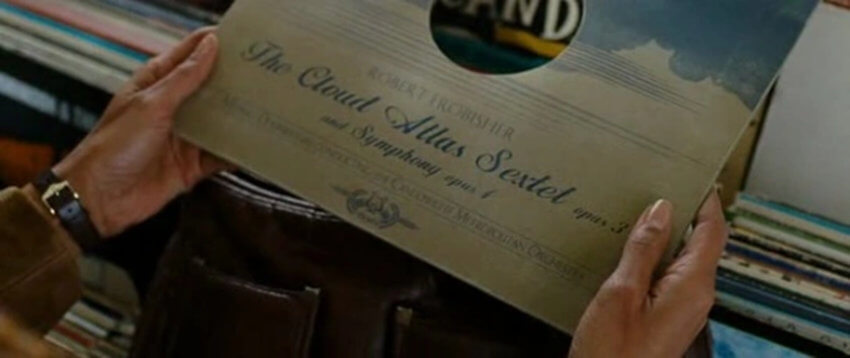
Cloud Atlas Sextet was the name of Frobisher’s six-movement composition. The Sextet can also refer to six musicians, perhaps a reference to the six central characters in the novel. Indeed, Frobisher describes his composition as “sextet for overlapping soloists“, including a pianist, a cellist, a violinist, an oboist, a clarinetist and a flutist, “each in its own language of key, scale and colour“.
He then mentions that, “In the 1st set, each solo is interrupted by its successor: in the 2nd, each interruption is recontinued“.
Does this sound familiar to you? It should, because Frobisher is describing the organisation of the book!
The six soloists represent the the six main characters of the different stories. Each character has also its own “language”, that is to say they come from different worlds and timelines.
Also, each character is interrupted by its successor, which is to say their stories are interrupted by the next story, and, in the second part of the book, the stories are resumed.
Just before Frobisher’s suicide he writes to his friend Sixsmith: “Cloud Atlas Sextet holds my life, is my life“.
Based on these clues, I believe the composition Cloud Atlas is meant to symbolise the characters’ soul, or the mindstream in Buddhism. By choosing the medium of music, Frobisher has created something immaterial and ethereal which can be passed on across generations.

During the interview for BBC4, Mitchell mentioned that all characters other than one are reincarnations, who share a birthmark in form of a comet.
Reincarnation, or rebirth, is one of the central tenets in Buddhism (see section Rebirth according to Buddhism). Even though it isn’t clear which religion Mitchell based his novel on, it is interesting that Sonmi, who becomes venerated by the Valleysmen in “Sloosha’s Crossin’ an’ Evrythin’ After”, comes from Korea, a country where Buddhism has a strong presence.
Furthermore, at some point in the novel, Sonmi meets the abbess of the Mountains, who tells her that Siddarhta Gautama’s teachings centred on how to overcome pain and achieve a higher reincarnation in future lifetimes. Sonmi then expressed her wish to be reincarnated in the Abbess’ colony.
Well, Siddarthta would become the Buddha around the 5th century B.C.E., and his teachings the foundation of Buddhism.
Thus, it is possible that the reincarnation theme in Cloud Atlas is strongly influenced by Buddhist traditions, as I will mention below.
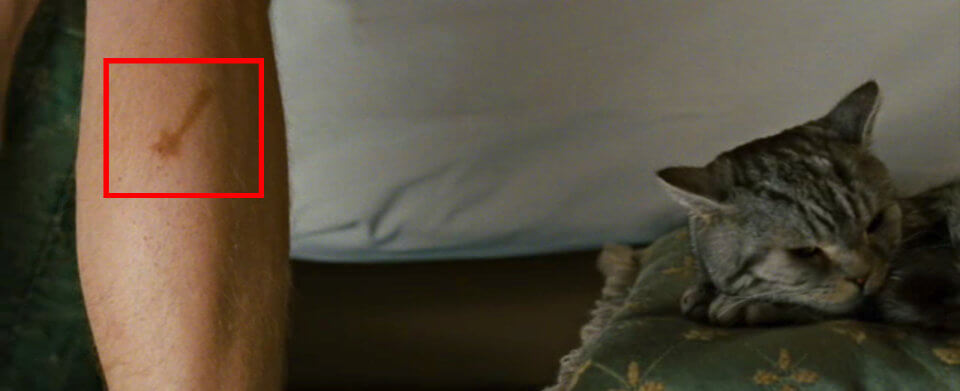
One line of research on reincarnation I described above was based on the idea that certain types of birthmark on children that claim to be reincarnations, often correspond to fatal wounds on the bodies of the alleged past life.
According to Ian Stevenson, a birthmark on the body of the child was the result of an imprint on the child’s embryo/fetus with “memories” of the wounds of the deceased individual.
In Cloud Atlas, the comet birthmark seems identical in some of the characters, suggesting a similar mechanism. However, nowhere in the book does Mitchell explain the meaning of the comet birthmark. Why a comet? Why between the shoulder blade and collar-bone?
Comets are cosmic objects made of a combination of gas, dust and rock which orbit the sun at regular intervals.
Thus, one could speculate that there is a parallel with the Eternal Recurrence idea. The comet, just as life itself, always returns to complete the cycle, just as the organisation of the book implies that time is circular and the events repeat over and over again.
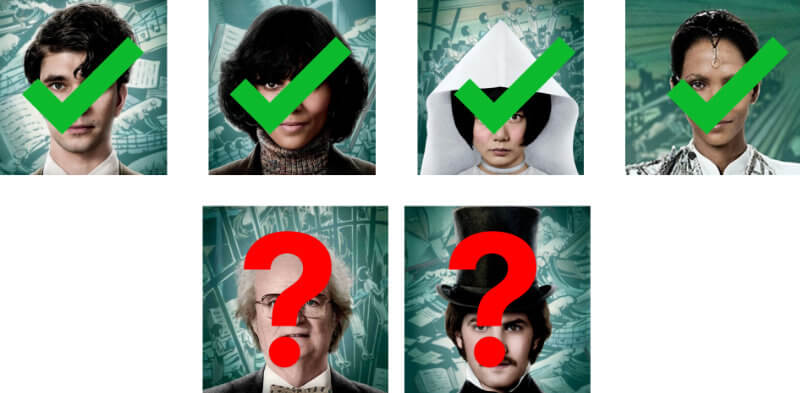
If the comet birthmark can be used to identify the incarnates then we have:
Robert Frobisher: “She plays with that birthmark in the hollow of my shoulder, the one you said resembles a comet“.
Luisa Rey: “Luisa shunts these aside to get a clearer view of a birthmark between her shoulder-blade and collar-bone. […] it is undeniably shaped like a comet.“
Timothy Cavendish: “I, too, have a birthmark, below my left armpit, but no lover ever compared it to a comet.“
Sonmi~451: ““My birthmark always caused me embarrassement when xposed.” […] “It resembles a comet.”“
Meronym: “Lady Moon lit a whoahsome wyrd birthmark jus’ b’low my friend’s shoulder blade as she [Meronym] sleeped fin’ly. A sort o’ tiny hand-mark it were, yay, a head o’ six streaks strandin’ off […]“.
There three observations we need to make here:
1) The book does not explicitly say who has the birthmark in Ewing’s story. It is unclear whether Ewing, Dr. Goose, Autum or any other character possess any birthmark whatsoever.
2) In “Sloosha’s Crossin’ an’ Evrythin’ After”, it is Meronym the one with the birthmark in the shape of a comet. At the end of the chapter, Zachry’s son ends with this: “he [Zachry] even b’liefed Meronym the Prescient was his presh b’loved Sonmi, yay, he ’sisted it, he said he knowed it all by birthmarks an’ comets’n’all.“.
3) Cavendish does have a birthmark, but it is possible that it is not in the shape of a comet.
Based on these observations, we can say with confidence that only Frobisher, Rey, Sonmi~451 and Meronym are reincarnations of one another (if the birthmark is the glueing piece).
So where does that leave the other main characters: Ewing, Cavendish and Zachry?
In my view, one of these characters is the odd-one-out mentioned by Mitchell in his interview for BBC4.
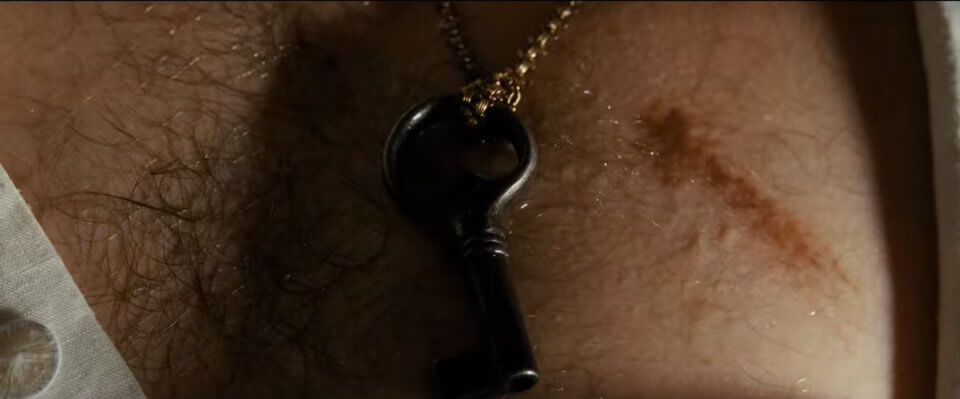
Let’s start with Ewing.
Nowhere in the book it is mentioned that Ewing (or any of the supporting characters) has a birthmark, let alone a comet-shaped one. It would be easiest, perhaps, to suggest that Ewing is the outsider, and it was really Frobisher who set off the series of reincarnations.
However, I don’t believe that makes much sense. First, Rey is deeply connected to Ewing. When she passes by the restored The Prophetess (the ship which brought Ewing from Hawaii to California), Rey feels a deep and mysterious connection with it: “Luisa is distracted by a strange gravity that makes her pause for a moment and look at its rigging, listen to its wooden bones creaking. […] Luisa’s birthmark throbs. She grabs for the ends of this elastic moment, but they disappear into the past and the future.“
What this seems to suggest is that Rey and Ewing are connected somehow. What’s more, the comet-shaped birthmark is at the center of it all. So, even though it is unclear if Ewing possesses a birthmark, he most likely does.
Now, Cavendish – this is a really tough one, so we need to dedicate an entirely new section to him…
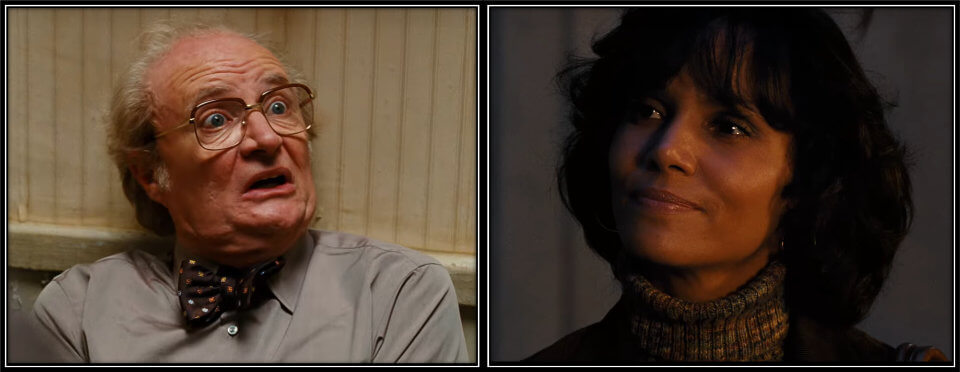
Before we discuss Cavendish, one thing some readers may have missed is that the lifetime of Rey and Cavendish overlap (see figure below).
Rey is 26 years old living in 1975, whereas it is not revealed in which year Cavendish’s story takes place. BUT, when Cavendish tried to make an escape from Aurora House, he mentions that “I haven’t run since the mid-seventies.“
Well, if he ran in the mid-seventies, he ran when Luisa Rey was alive and doing her research on HYDRA.
Alas, we hit a conundrum.
Both Rey and Cavendish have a birthmark, which, at face value, suggests they are reincarnations of one another. However, how can they be both reincarnations if they are both alive at the same time and of similar age?
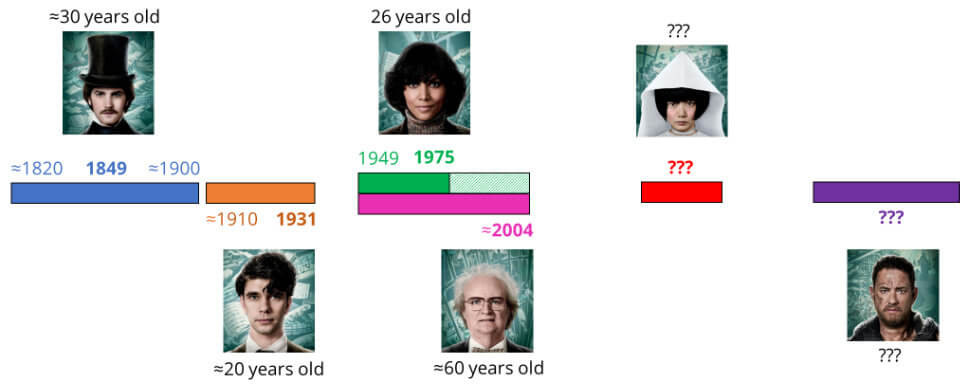
There are (at least) two possibilities.
Some readers have noted the ghastly way Frobisher ended his life, and suggested that, perhaps, after his death, Frobisher’s soul was split into two halves. Thus, it could be that Cavendish and Rey are sharing a soul, torn in two after Frobisher’s death. It is a radical idea, but one which would reconcile the fact that Cavendish and Rey are living at the same time.
To be honest, I do not see much merit in this interpretation. If that were true, then Rey and Cavendish are about the same age. Why doesn’t Cavendish appear in Rey’s story? Why doesn’t Rey connect to Cavendish?
The other possibility, and the one I lean more towards, is that Timothy Cavendish is not a reincarnation! Therefore, he is the odd-man-out that Mitchell referred to in his BBC4 interview.
Note that Cavendish does have a birthmark, but he says it looks nothing like a comet.
At first, I dismissed Cavendish’s comment as a mere disparaging remark of a grumpy fellow who is too willing to criticise everything around him. But, of all his lovers, no-one had the impression that his birthmark looked like a comet, when everyone else seems to think so? Apparently, one of them even said it looks like Timbo’s turd (!).
So, perhaps the birthmark is really not identical to the others. In fact, its position is in a different location than Frobisher’s, Rey’s and Sonmi’s birthmarks, all of which are located between the shoulder-blade and the collar-bone (Cavendish’s is below the left armpit).
Furthermore, Cavendish doesn’t appear to “feel” the other supposed incarnates; he doesn’t have déjà vus or visions of past lives like the other characters.
As a matter of fact, Cavendish seems almost detached from the entire novel, as if he is an outside. Check this comment: “One or two things will have to go: the insinuation that Luisa Rey is this Robert Frobisher chap reincarnated, for example“.
Just as Zachry is narrating his story, so is Cavendish the narrator of his own story. Since Zachry is unlikely to be a reincarnation, if I were to ditch Cavendish or Rey as being a reincarnation, I would choose Cavendish.
However, many readers are more willing to believe Luisa Rey isn’t a reincarnation. And the reason is that she might not even be a real person within the Cloud Atlas universe.
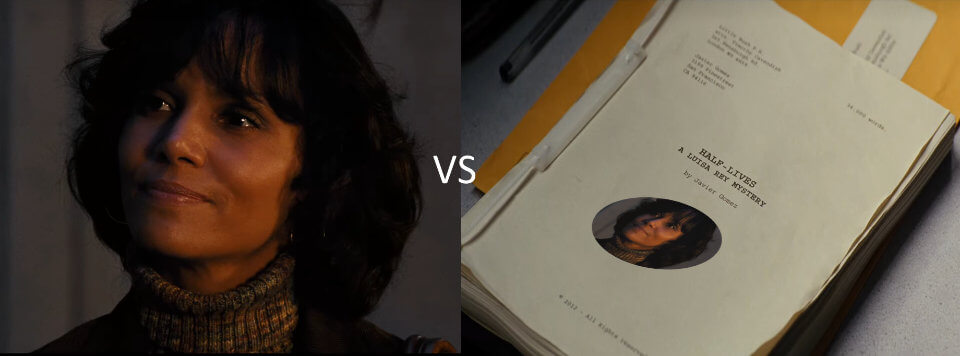
There is a lot of good debates out there (e.g., reddit, goodreads) about whether Luisa Rey is an actual person in the book or a fictional character.
What evidence is there for the fictional nature of Rey’s character?
1) The title of her story is literally: “Half-Lives: The First Luisa Rey Mystery”. It does sound pretty much like the title of a series of detective stories.
2) Timothy Cavendish comes across a book entitled “Half-Lives: The First Luisa Rey Mystery” by a certain Hilary V. Hush, and treats it as a work of fiction, strongly suggesting that Luisa Rey is a mere fictional character within the Cloud Atlas universe.
3) “Half-Lives: The First Luisa Rey Mystery” describes made-up Californian places such as Buenas Yerbas (although there is a place called Yerba Buena Island in San Francisco) or Swannecke river .
I have to admit though that I’m leaning more towards the idea that Rey is not supposed to be a fictional character.
Let’s start with point (3) above. Even though Buenas Yerbas does not exist in actuality, it is nevertheless mentioned in “Sloosha’s Crossin’ an’ Evrythin’ After”: “My parents an’ their gen-’ration b’lieved, somewhere, hole cities o’ Old’uns s’vived the Fall b’yonder the oceans, jus’ like you, Zachry. Oldtime names haunted their ‘maginin’s… Melbun, Orkland, Jo’berg, Buenas Yerbas […]“.
Likewise, Swannecke is also mentioned in that same story: “She [Meronym] ’fessed most Prescients cudn’t ride no animal but she’d lived with a tribe called the Swannekke what lived way past Ank’ridge an’ way past Far Couver“.
So, I believe we can confidently discard (3) as evidence for her fictitious nature.
Now, number (1) and (2) are trickier, but let’s see the counter-arguments.
1) Luisa Rey interacts with Sixsmith, who appears to exist in Frobisher’s story. So, if Rey is fictitious, so must be Frobisher, and, by extension, Ewing.
2) Luisa Rey is also a character in Mitchell’s other books, in which she exists as a real person in the same universe as Cloud Atlas.
3) In Cavendish’s story, the name of the author of “Half-Lives: The First Luisa Rey Mystery” is a certain Hilary Vincent Hush. The identity of this person is never revealed to us, but many readers have speculated the name is most likely a pseudonym, perhaps of Rey herself.
In the film, just when Timothy Cavendish is putting down Rey’s manuscript, we can see the author’s name “Javier Gomez”, Rey’s teenager friend (in the book, he is called Javier Moses), who is fascinated with crime novels – perhaps, he is the incognito author of the books.
4) Rey’s mother lives in Ewingsville, which is likely a city founded in honour of Adam Ewing, who likely lived there after returning from Hawaii.
In fact, Rey has a paranormal experience when she passes by the ship on which Ewing ostensibly sailed from Hawaii to California. Her birthmark even begins to throb.
5) But the most convincing clue that Luisa is just as real as any other character comes from Sonmi~451. Check what she says: “Mr. Chang warned us to brace, killed the engine and swerved off the road. […] The ford gathered speed, weight, weightlessness. I remember the drop: it shook free an earlier memory of blackness, inertia, gravity, of being trapped in another ford; I could not find its source in my own memories.”
I dont know about you, but that looks a lot like Rey’s accident on the Swannecke bridge. If so, then Sonmi is having a déjà vu, the likes of Frobisher’s and Rey’s.
These points suggest that Rey is likely a reincarnation of Ewing.

There is another major theme in Cloud Atlas, which is not as obvious as reincarnation, and that is the idea of Eternal Recurrence. As explained in the section Eternal Recurrence: Nietzsche’s most-abysmal thought, Eternal Recurrence sees time as circular and that everything eventually repeats itself.
Setting aside direct references to this philosophical concept (e.g., Ayrs mentioning that his last symphonic work will be titled Eternal Recurrence, based on Nietzsche’s philosophy), there are some subtle clues throughout the novel that suggest that some past characters appear to experience bouts of clairvoyance or other paranormal futuristic activity.
Here’s a few:
1) Ewing experiences severe headaches on the journey to Hawaii, which may presaging the murder of the clones in “The Orison of Sonmi~451” who, expecting a boat trip to Hawaii, are shot dead in the head.
2) Frobisher describes the urge to kill Ayrs in one of his letters: “A blue vein throbbed over Ayrs’s Adam’s apple and I fought off an uncountably strong urge to open it up with my penknife. Most uncanny. Not quite déjà vu, more jamais vu.” Jamais vu is the feeling that a person or event is unfamiliar even though that person or event is actually very familiar.
The experience Frobisher is referring to may be the event in which Zachry slits the throat of a Kona (even though Zachry is probably not a reincarnation of Frobisher).
“A vein pulsed in his Adam’s apple […] an’ I stroked my blade thru his throat. […] I’d stony my cussed soul. If I’d been rebirthed a Kona in this life he could be me an’ I’d be killin’ myself“.
3) In “The Ghastly Ordeal of Timothy Cavendish”, Nurse Noakes mentions that “Because you [Cavendish] are new I will not have you eat soap powder.”, which is probably a reference to the soap fabricants eat in “An Orison for Sonmi~451”.
Cavendish also mentions at some point: “Ursula and I went punting below that quaint bridge, where those Biotech Space Age cuboids now sit cloning humans for shady Koreans“, which is a direct reference to Sonmi~451 and her fellow clones.
4) At some point in “An Orison for Sonmi~451”, Hae-Joo is supposed to complete a code to grant him passage, and the passphrase was “Travel far enough, you meet yourself“. I interpreted the “Travel far enough” as very Nietzschesque.
5) When Rey approaches the ship Ewing was on, Rey’s birthmark starts to throb, at which point Rey “grabs for the ends of this elastic moment, but they disappear into the past and the future”.
Disappearing into past and future suggests a never-ending and cyclical continuum. I should point out that it is unlikely Rey’s experience is the result of wishful thinking. She can’t have made the connection between The Prophetess and Ewing, because Frobisher doesn’t mention the ship in his letters.
6) Writing to Rufus Sixsmith, Frobisher opens his heart to his friend:
“Strip back the beliefs pasted on by governesses, schools and states, you find indelible truths at one’s core. Rome’ll decline and fall again, Cortazar’ll sail again and, later, Ewing too, Adrian’ll be blown to pieces again, you and I’ll sleep under Corsican stars again, I’ll come to Bruges again, fall in and out of love with Eva again, you’ll read this letter again, the Sun’ll grow cold again. Nietzsche’s gramophone record. When it ends, the Old One plays it again, for an eternity of eternities.”
And then he continues:
“We do not stay dead long. Once my Luger lets me go, my birth, next time around, will be upon me in a heartbeat. In thirteen years from now we’ll meet again at Gresham, ten years later I’ll be back in this same room, holding this same gun, composing this same letter, my resolution as perfect as my many-headed sextet. Such elegant certainties comfort me.“
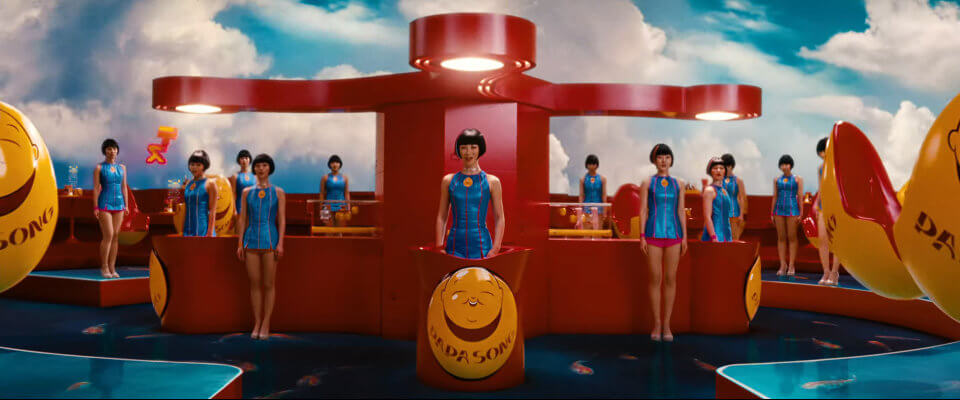
But perhaps the best evidence of eternal recurrence in the novel is Ayrs’ foreseeing of the Papa Song restaurant with all its clones eating soap. The melody he came up with came from the Papa Song melody from “An Orison for Sonmi~451”.
““I [Ayrs] dreamt of a … nightmarish café, brilliantly lit, but underground, with no way out. I’d been dead a long, long time. The waitresses all had the same face. The food was soap, the only drink was cups of lather. The music in the café was”—he wagged an exhausted finger at the MS—“this”“.
How can Ayrs possibly have known what will happen decades into the future in Korea?
The answer lies in that Ayrs, being likely a reincarnation himself (which I will not discuss in this article; see Could every character be a reincarnation?) has inherited memories from incarnates that do not yet exist in his timeline.
So the characters aren’t only connecting with the past, they are also connecting with the future as well. If past, present and future are connected, this must necessarily entail a cycle.
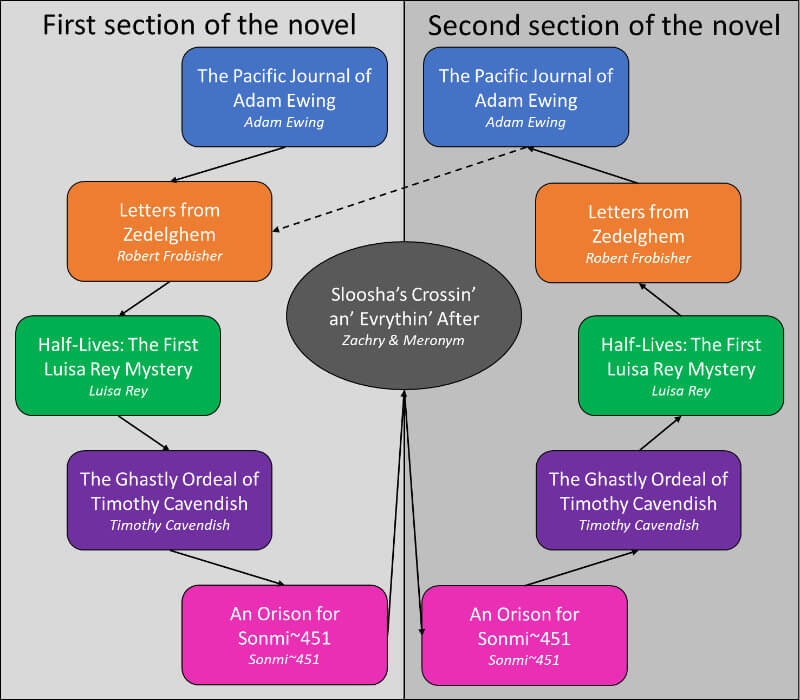
The organisation of the book is a final clue of this Eternal Recurrence idea. By making “Sloosha’s Crossin’ an’ Evrythin’ After” the central story from which everything else converges towards, it acts as a sort of a thread that unites all other stories. By starting with Ewing and ending with Ewing, the book gives off the impression of a cycle – if it ends with Ewing, it must continue with Frobisher, Rey, and so on.
There is another point in “Sloosha’s Crossin’ an’ Evrythin’ After” that informs us a great deal about Eternal Recurrence. Judging by the primitive society and crude technology used by Zachry’s village, humanity appears to have regressed many centuries into the past. The most advanced civilisation, the Prescients, are in steep decline, as plagues run rampant all over the world, killing much of the technologically-advanced people.
What is the logical conclusion of all this?
Well, in my view, it tells us that we are returning to our modest beginnings, when humans were living in hunter-gather cultures about 12,000 years ago. Obviously, a time which would have way preceded Sonmi’s, Cavendish’s, Rey’s, Frobisher’s and Ewing’s lifetime.
The fact that Meronym’s mission failed implies that technological advances halted and civilization regressed to their nomadic begginings. With sufficient generations, humanity would forget all about its most glorious past, perhaps even destroying any remnants of Meronym’s, Zachry’s and everyone else’s existence.
Meronym would die and reincarnate into someone else, and that someone else would reincarnate into someone else, until the soul reached Ewing; the cycle would begin again.
Just as I explained in the section Mindstream, ad infinitum, the idea of Eternal Recurrence is not at odds with Buddhist thinking that the universe is cyclical and mindstreams ride along this eternal voyage through time and space.
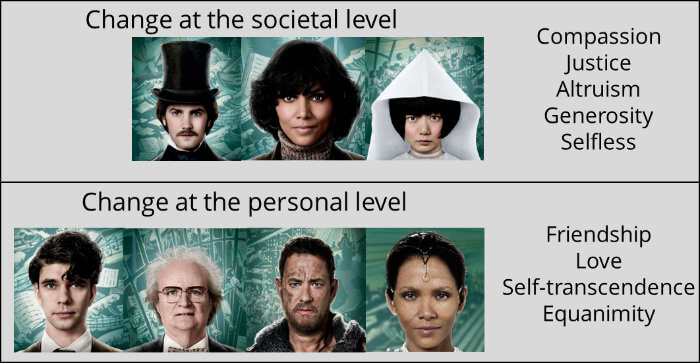
OK, so I discussed Cloud Atlas in terms of reincarnation and Eternal Recurrence. But what is it Cloud Atlas all about? What is the big picture so to speak?
In my opinion, Cloud Atlas is about surpassing oneself, to better oneself, to pursue some ideal worth pursuing (which is very much in line with Nietzsche’s idea of will to power that I discussed in the article on Dogville).
Note how each character is learning with the occasion and events that happened during their lifetime. Each is becoming a more virtuous, more compassionate and/or more sensible person as the story progresses.
This idea of learning to become a better individual is related to the Buddhist concepts of karma and nirvana that I discussed above.
And I think it is interesting that Mitchell didn’t create a linear progression in which we witness a gradual change from a corrupt person at the beginning to an enlightened individual at the end.
No.
In all stories, every character goes through a personal transformation that not only makes them better individuals, but, in some cases, also leaves an indelible mark on the society.

Ewing started off being a racist and white supremacist, but ended up saving Autua’s life, befriending him, and, later, dedicating his life to the abolition of slavery.
Frobisher was a young man with a penchant for luxury which he could not afford. However, the character gradually learns to value more emotional well-being and love. He produces the sublime Cloud Atlas sextet, which moves the lives of subsquent reincarnations. Still, of all characters, Frobisher is the one with the least constructive development, which could be an argument for the soul-splitting hypothesis (i.e., Frobisher’s death splitting his soul into two, inhabiting both Cavendish and Rey).
Rey hungers for recognition and reputation. She puts herself at great peril by trying to unmask a corporate conspiracy surrounding a local nuclear power plant. However, thanks to her tenacity, she publicly exposes the corruption at the corporation, saving countless lives from what could have been a terrible nuclear catastrophe.
Cavendish’s contribution to humanity is smaller in comparison, and his story appears to only serve as inspiration for Sonmi’s ascension. Nevertheless, even Cavendish showed progress. Having lived a selfish, greedy and immoral life, his experiences at the Aurora House changed him to be a more compassionate and friendly man, building genuine connections with people rather than using them.
Sonmi is perhaps the character that had the greatest impact on the world. As a fabricant with limited experience and knowledge of the way of life, she eventually becomes a venerated figure by actively seeking to bring down the government and free fabricants from oppression.
Meronym’s and Zachry’s challenge are also more on a personal level. The unlikely intimate relationship Meronym develops with Zachry symbolises the power of friendship. Zachry’s successful containment of his demon suggests equanimity and tranquility of mind.
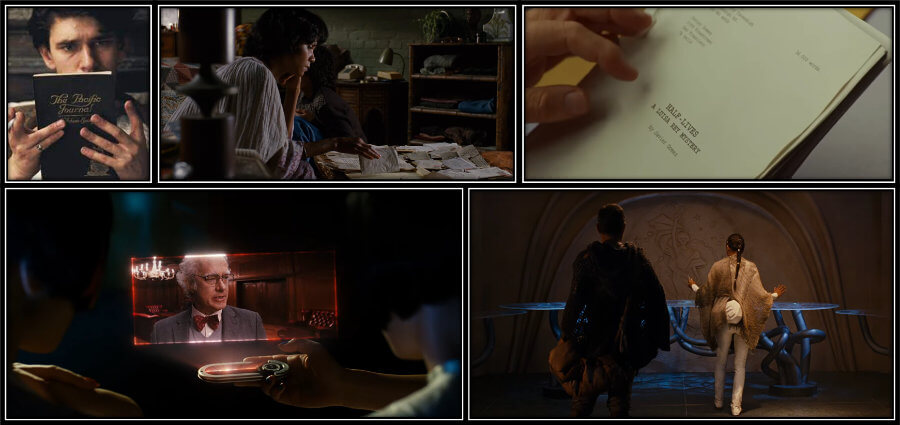
The key to each character’s transformation is the connection to the character from the previous story: Frobisher’s key was Ewing’s journal; Rey’s key was Frobisher’s letters; Cavendish’s key was Rey’s novel; Sonmi~451’s key was Cavendish’s film; Zachry’s key was Sonmi’s Declarations.
In Ewing’s case, the motivation to become an abolitionist may not explicitly appear to have been triggered by any previous character, since Ewing’s story is the most further into the past.
However, it is likely that even Ewing’s decisions may have been shaped by events occurring in the future, specifically from “Sloosha’s Crossin’ an’ Evrythin’ After”.
For example:
– Most white Europeans and Americans that accompany Ewing seem to believe white people to be more civilised and capable of developing an advanced civilisation than non-white people. In “Sloosha’s Crossin’ an’ Evrythin’ After”, however, it is the “dark-skinned” Prescients that have become the most advanced civilisation, whereas white people have receded to almost stone age cultures.
– Ewing learns that the local Moriori banishes any individual that kills a member of their group. Interestingly, the exact same practice of non-violence is enforced in Zachry’s village: “murderin was forbidden by Valleysmen law, yay, if you stole another’s life no’un barter nothin’ with you nor see you nor nothin’cos your soul was so poisoned you may give ‘em a sickness“.
– Ewing also learns that the Moriori had been brutally attacked and conquered by the Maori, with many Moriori being killed or enslaved by them. Similarly, in Zachry’s timeline, the Valleysmen have been conquered by a rival tribe, the Kona, who, just as the Maori did to the Moriori, also killed and enslaved many of the Valleysmen.
I don’t think these relationships are coincidental. Mitchell is giving us a clue that even Ewing’s transformation may have been triggered by similar events occurring in the far future.
Meronym’s realisation of the injustice regarding how the Kona treated the Valleysmen, could have served as inspiration for Ewing’s awakening in helping Autua and become an abolitionist.

One reader once asked Mitchell a question of whether there was a particular character that Mitchell found pivotal to the book and that the book revolved around. Mitchell responded that that character was Zachry.
At face value, “Sloosha’s Crossin’ an’ Evrythin’ After” has the peculiarity that it is the only story which is being narrated by the main character itself, in this case, Zachry, who is telling his tale to his grandchildren.
So, the only character we know exists for sure is Zachry. We can doubt the existence of any other character, but not of Zachry. At the end of the chapter, one of Zachry’s children takes over the narration and confirms that Zachry was his/her dad. The child suspects that the stuff involving Meronym is almost certainly true, because he did find an orison device. However, the child is also convinced that some parts of Zachry’s story were likely embellished or made up.
I believe this is the reason why Zachry is such an important character. Everything hinges on Zachry telling the truth. If he is making Meronym up (or at least the part about her being a reincarnation), then we should seriously doubt the existence of the other characters. Zachry’s child only describes a “ghost-girl” appearing in the air and speaking a language nobody can decipher. No mention is made about how this girl looks like and what she did.
Here, Mitchell is playing with the idea of the unreliable narrator. I have analysed a few works in which the narrative relies on an unreliable narrator (e.g., check our articles on Christopher Nolan’s film “Memento”, Edgar Allan Poe’s novel “The narrative of Arthur Gordon Pym of Nantucket” or the painting “Not To Be Reproduced” by René Magritte).
However, if we believe Zachry’s story to be true, then Meronym is the reincarnation of Sonmi~541, who is the reincarnation of Rey (and Cavendish?), who is the reincarnation of Frobisher, who is the reincarnation of Ewing.

And that is interesting because “Sloosha’s Crossin’ an’ Evrythin’ After” is the only story that is not taking place inside another story. Ewing’s story is a based on journal entries edited by his son which is read by Frobisher. Frobisher’s story is told from letters supposedly written by Frobisher to his friend/lover Sixsmith, which are then read by Rey. Rey’s story is written as a fictional novel, which is read by Cavendish. Cavendish’s story is told as if it were a script for a movie and is, in fact, turned into a film, which is watched by Sonmi. Sonmi~451’s story is told as a series of recorded interviews, which are seen by Meronym and Zachry.
Take the first chapter (the first part of Ewing’s story) as an example. It kind of looks like it starts in the middle of Ewing’s adventure, and 40 pages later it ends abruptly mid-sentence.
Now, Frobisher mentions in one of his letters that the book about Ewing’s journey starts on page 99 and ends abruptly mid-sentence 40 pages later!
This may suggest that Ewing’s chapter is just how Frobisher is reading it!
The same could be said about any other character: maybe Frobisher’s chapter is how Rey is reading the letters; maybe Rey’s chapter is how Cavendish is reading the novel; maybe Cavendish is how Sonmi is watching the movie; maybe Sonmi is how Zachry is imagining her story.
If so, we can ask the question: is any of it real?
Only Zachry will know.
Cloud Atlas tells six different tales, happening at different time epochs.
By adding a mysterious birthmark and narrative nuances regarding reincarnation, Mitchell superbly connected these disparate stories in such a way that they all feel intricately interrelated.
There is a lot of food for thought. Ewing, Frobisher, Rey, Sonmi~451 and Meronym are, most likely, reincarnations of one another. It is unclear whether Cavendish is a reincarnation, or whether Mitchell included him on a whim, given the author’s fondness for the character.
Sharing traits of an unreliable narrator, everything hinges on the veracity of Zachry’s account of the events.
But what is Cloud Atlas really about?
Buddhism teaches us that this life is one of suffering, that we should accumulate good karma, practice self-instropection to break the infinite cycle of birth, death and rebirth and to achieve nirvana. In Cloud Atlas, we gradually see each character surprassing him/herself, becoming better individuals and making a mark in the world.
However, the cycle never seems to end.
The implication that time in Cloud Atlas is cyclical (the Eternal Recurrence idea), with past and future being connected, is suggestive that rebirth in the novel is eternal.
Is Mitchell saying something about human nature here? Is the message that humanity cannot achieve a global state of nirvana? That we are all doomed to commit the same mistakes over and over again?
That would surely be a pessimistic view on humanity, but, some would argue, a realistic one.
The idea behind Eternal Recurrence is surely disquieting. Even Nietzsche was terrified of his own thought when discussing it with his friend Lou Andreas-Salome. Zaratrustra called it the “most abysmal thought”.
And for good reason.
If time were indeed circular, as Nietzsche had envisioned it, that would mean every catastrophe that has befallen on humankind and every imaginable tragedy still to come would happen an infinite amount of times. Just imagine, having to relive the Plague, both world wars, 9/11, Covid, over and over again…
But don’t despair! The idea of Eternal Recurrence has been pretty much rebutted by contemporaneous science.
And that IS comforting.
See you in the next article!
Leave a comment
Add Your Recommendations
Popular Tags